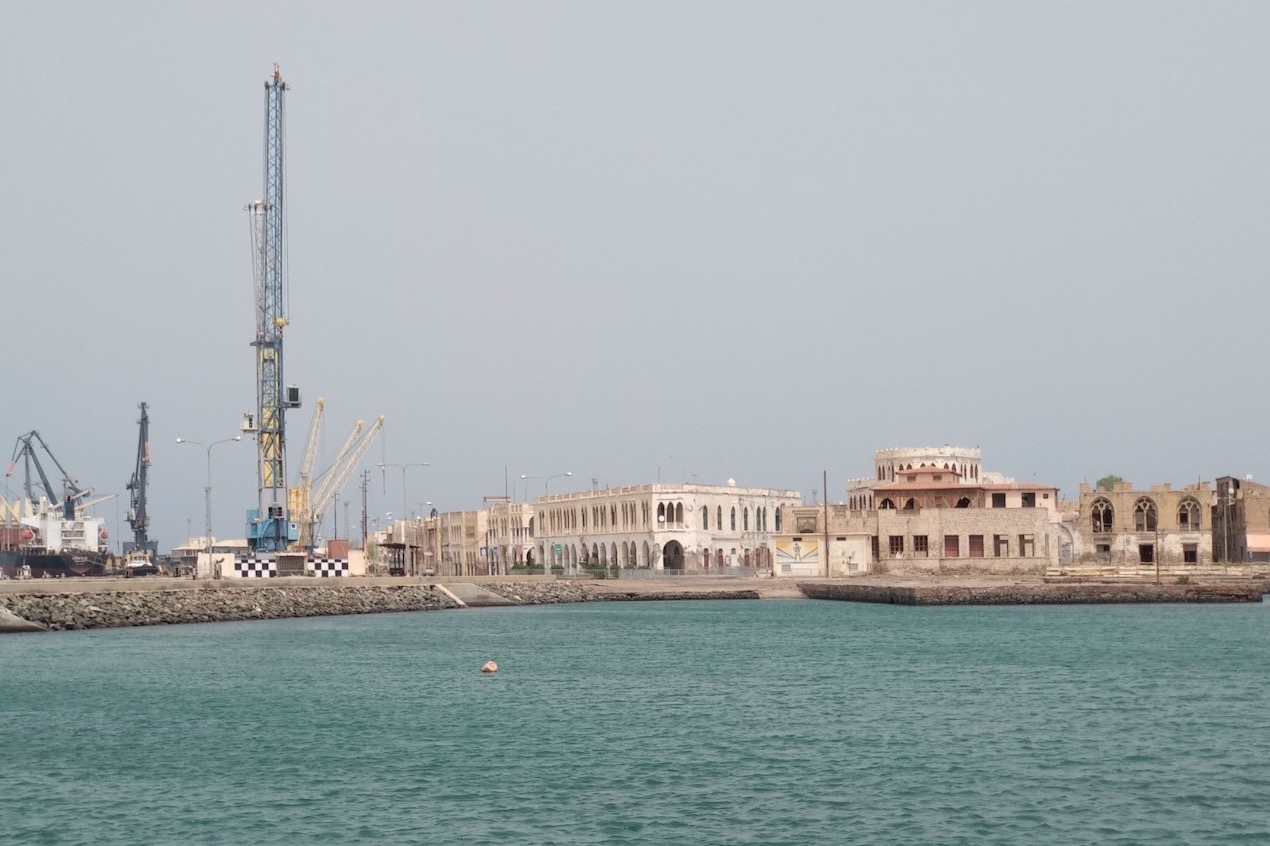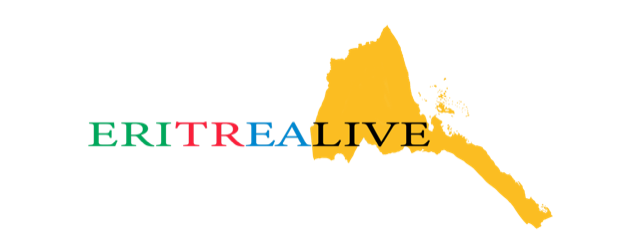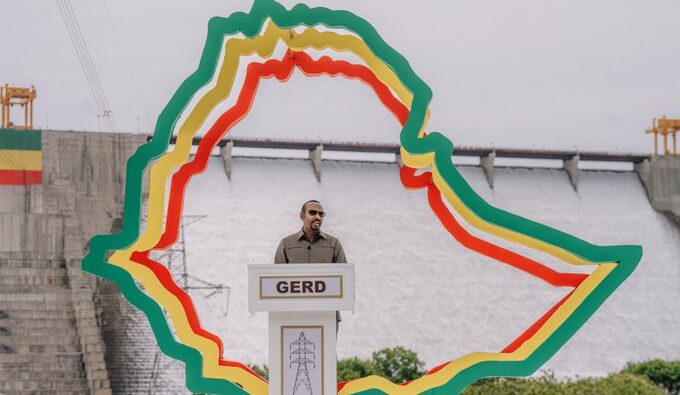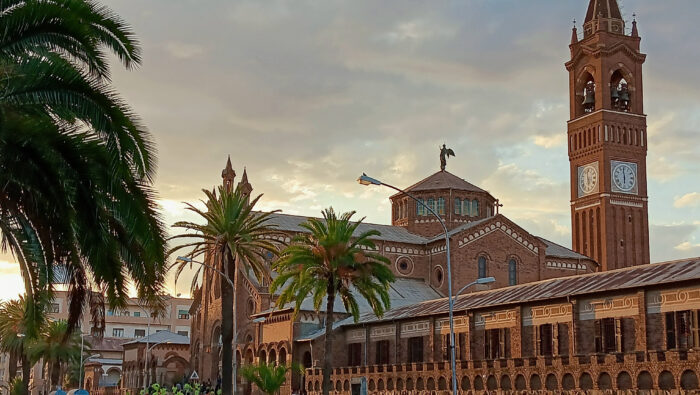Ethiopia’s Pursuit of Eritrea’s Assab Port: A Ticking Time Bomb

Since 2023, Ethiopia has reignited geopolitical tensions in the Horn of Africa by demanding direct access to the Red Sea, specifically through the Eritrean port of Assab
Original article in Italian: 
Since 2023, Ethiopia has ignited a dangerous geopolitical issue in the Horn of Africa by requesting territory from a neighboring country to establish a naval base. Prime Minister Abiy Ahmed has even hinted at possible military action should negotiations fail, asserting that “150 million people, the projected population by 2030, cannot remain in a geographic prison.”
This perspective is not shared by neighboring countries, which are open to allowing Ethiopia to use their ports for commercial purposes but are firmly opposed to ceding any part of their territory.
In this context, Eritrean scholar Debesai Tesfu offers a critical analysis, examining articles by Ethiopian researcher Blen Mamo Diriba, affiliated with the Institute for Foreign Affairs. Diriba’s writings focus on three main themes: Ethiopia’s denial of Eritrea’s geographical reality—specifically its extensive coastline; the belief that Ethiopia has a “strategic interest” in maritime access; and the proposal for a “treaty with Eritrea” under international supervision to regulate the use of its ports.
For Prime Minister Abiy Ahmed, acquiring a port and access to the Red Sea is intrinsically linked to Ethiopia’s supremacy. He believes that the largest and most populous country in the Horn of Africa must possess a port at all costs.
Diriba goes further, suggesting that Ethiopia could “reclaim” Assab. The tension is evident in the title of one of her articles: “Could Assab Become Africa’s Crimea?” In the article, later removed from the web, Diriba legitimizes—or at least contemplates—a unilateral re-annexation of Assab by Ethiopia, drawing parallels to Russia’s occupation of Crimea in 2014. The central point of this comparison is the shift from commercial agreements to territorial sovereignty—not through treaties or maritime law, but through military conquest. Expressions like “Eritrean autonomy” or “Eritrean sovereignty” frequently appear in her writings. To fully understand their meaning, it’s essential to look back.
In the 1950s, Eritrea lost all forms of autonomy, first through a UN-imposed federation, then through forced annexation by Emperor Haile Selassie. To regain the autonomy necessary to build its own state, Eritrea had to fight for thirty years (1961–1991), first against the emperor, then against the Derg military junta led by Mengistu Haile Mariam. On May 24, 1991, Eritrea finally became a sovereign state, with territory defined by colonial borders, including the ports of Assab and Massawa.
Diriba also addresses the issue of sea access by proposing a potential “bilateral treaty with Eritrea,” based on the principles of the United Nations Convention on the Law of the Sea (UNCLOS). She cites a clause that would allow Ethiopia to use the ports without infringing on Eritrean sovereignty, through a so-called “maritime interface.”
But what exactly does this entail? It’s important to note that Eritrea has never denied access to its ports for commercial activities, and free trade zones have long existed in Massawa and Assab.
So, what would this “maritime interface” imply? The goal is to establish a naval and military base. According to Abiy, without a navy, Ethiopia would lose prestige. However, this argument is unlikely to hold weight in international law.
Many questions remain. How could Addis Ababa “obtain an independent maritime route” without violating the sovereignty of neighboring states, given its landlocked status? Furthermore, how could it exercise maritime autonomy without any coastal borders? If the Red Sea is considered a common maritime good, what would respecting Eritrean autonomy entail? Would control of the ports become Ethiopian?
Finally, the most unsettling question: Could the Red Sea trigger a new war?
So far, we’ve examined the Eritrean critique of Ethiopian claims, which conflate access to the sea with territorial possession. No international law can compel a coastal country to cede its sovereignty to accommodate a landlocked neighbor.
Proponents of Ethiopia’s right to the sea often reference Ras Alula, the general who, in the early 20th century during the Italian occupation of Eritrea, described the Red Sea as Ethiopia’s “natural frontier.” However, even then, this wasn’t the case. The correct historical reference is the Treaty of Wuchale, signed on May 2, 1889, by Count Pietro Antonelli and Menelik II. After Italy’s defeat at the Battle of Adwa, the treaty was nullified, and with the Peace of Addis Ababa, Menelik recognized Eritrea as a state entity defined by Italian colonial borders, from the Mareb River to Assab, where the Rubattino shipping company’s flag had been raised as early as 1879.
Paradoxically, it’s this colonial legacy that demonstrates Ethiopia never had sovereignty over Eritrean ports.
Thirty years ago, Abiy notes, Ethiopia, with a population of 47 million, possessed two ports. But after the war with Eritrea (1998–2000) and increasingly strained relations, it had no choice but to use Djibouti’s port, lamenting the loss of Assab.
However, as previously mentioned, Eritrean ports were Ethiopian only during the annexation period.
The Algiers Agreements (2002), following the conflict, did not alter Eritrea’s maritime borders.
In the past two years, Ethiopia’s neighboring countries have clearly distanced themselves from its expansionist ambitions. Somalia has declared that “territorial issues are not subject to negotiation.” Djibouti has similarly affirmed that, “as a sovereign country, its territorial integrity cannot be questioned.” Eritrea’s official response has been more cautious but still clear, describing the discussions—both real and alleged—about water, sea access, and related topics as “excessive.”
But could Ethiopia withstand another conflict?
The internal war between the government and the Tigray People’s Liberation Front (TPLF), fought in the Tigray region, resulted in 600,000 deaths and millions of displaced people. Although formally concluded with the Pretoria Agreement (2022), it has given way to another intense conflict, still ongoing, in the Amhara region.
The hopeful period of 2018, when the new Prime Minister Abiy Ahmed took office, promising peace and development for Ethiopia and the entire Horn of Africa, now seems distant.
Today, Ethiopia’s economic growth has lost momentum, with inflation exceeding 30 percent.
Many ongoing projects, such as urban developments in the capital, appear superficial. For ordinary people, daily life is increasingly challenging. The purchasing power of the middle class has eroded to the point where even the Prime Minister advises eating bread and bananas.
According to several analysts, Abiy is focusing on the Red Sea to awaken dormant national pride—a dangerous escape route from the country’s worst crisis, which risks overwhelming it.
In this context of internal instability and regional tensions, the battle for access to the Red Sea truly risks becoming a ticking time bomb.





This is a biased one sided story favoring Eritrea. You could have mentioned several ways that such potential conflicts could be averted, ways that would benefit both countries. A universal fact, if a cat is cornered from all directions, it reacts and if Ethiopia does, I will not be surprised. Even more dangerous, PIA who cannot evolve from still his gruella mentality of invincibility is still stuck with his mode of argumentation: may way or no way. More over, his past records show his disposition to use such situations as excuse to ignite a war with neighbors. The consequence, if war ignites, is to be seen but one thing for sure we know, it will be far different from any war PIA has ever experienced.
Very articulated article. I congratulate, the writer for the deep analysis and historical engagement between Eritrea and Ethiopia.